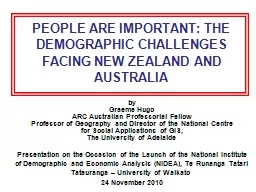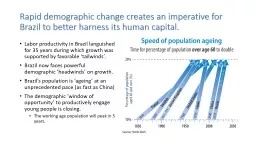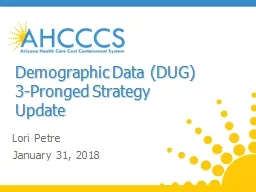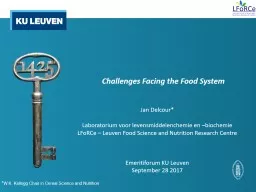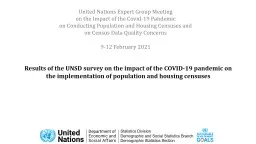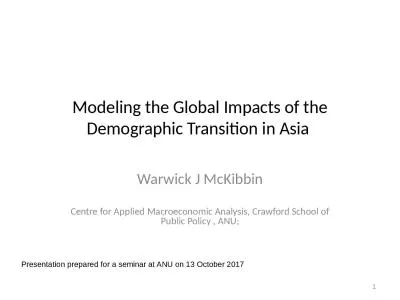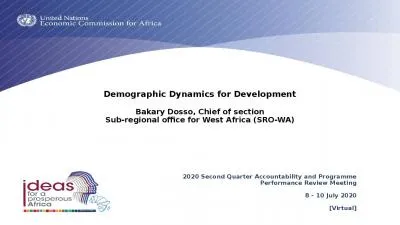PPT-PEOPLE ARE IMPORTANT: THE DEMOGRAPHIC CHALLENGES FACING NEW
Author : tatyana-admore | Published Date : 2016-03-18
by Graeme Hugo ARC Australian Professorial Fellow Professor of Geography and Director of the National Centre for Social Applications of GIS The University of Adelaide
Presentation Embed Code
Download Presentation
Download Presentation The PPT/PDF document "PEOPLE ARE IMPORTANT: THE DEMOGRAPHIC CH..." is the property of its rightful owner. Permission is granted to download and print the materials on this website for personal, non-commercial use only, and to display it on your personal computer provided you do not modify the materials and that you retain all copyright notices contained in the materials. By downloading content from our website, you accept the terms of this agreement.
PEOPLE ARE IMPORTANT: THE DEMOGRAPHIC CHALLENGES FACING NEW: Transcript
Download Rules Of Document
"PEOPLE ARE IMPORTANT: THE DEMOGRAPHIC CHALLENGES FACING NEW"The content belongs to its owner. You may download and print it for personal use, without modification, and keep all copyright notices. By downloading, you agree to these terms.
Related Documents

